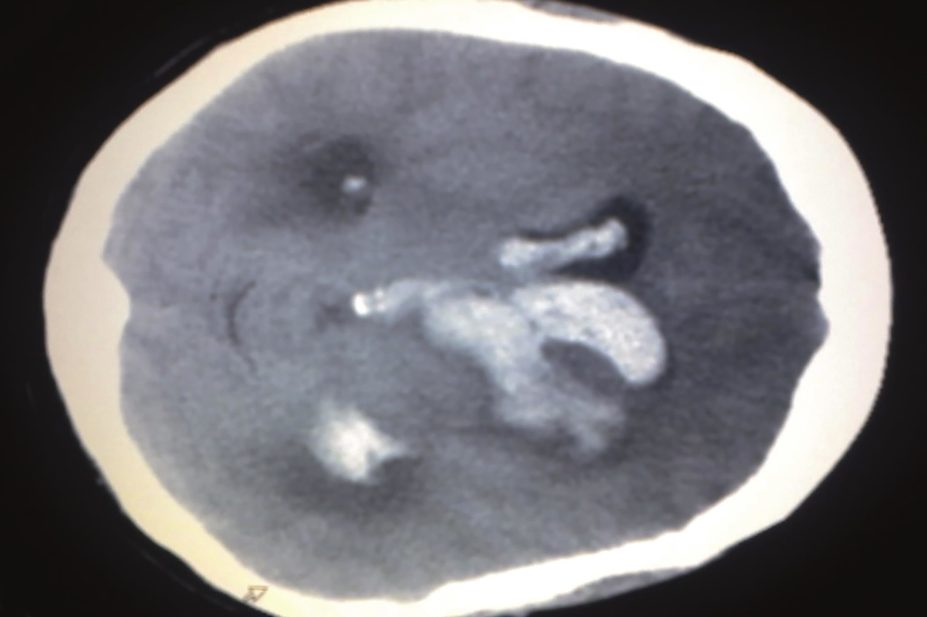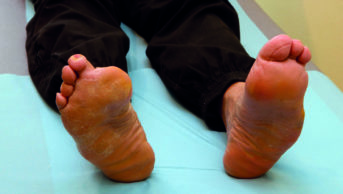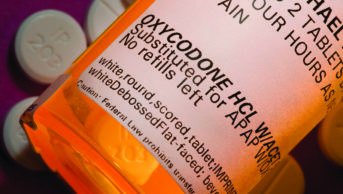
Wikimedia Commons
Concomitant use of antidepressants and nonsteroidal anti-inflammatory drugs (NSAIDs) is associated with a significantly increased risk of intracranial haemorrhage (ICH) in the first 30 days after the drugs are taken together, a large cohort study[1]
has found.
Using a national Korean health insurance database to create a propensity-score matched cohort, the researchers calculated a hazard ratio (HR) for ICH of 1.6 (95% confidence interval [CI] 1.32–1.85) for combined use of antidepressants and NSAIDs versus use of antidepressants alone.
Subgroup analysis indicated that the risk was higher in men than in women, with HRs of 2.6 (95% CI 1.93–3.42) and 1.2 (95% CI 0.89–1.57), respectively, but did not vary depending on the other characteristics examined, which included age, ICH subtype, comorbidity and other medication.
Also, the risk of ICH did not apparently differ among different classes of antidepressants, namely, tricyclic antidepressants, selective serotonin reuptake inhibitors (SSRIs) and serotonin-norepinephrine reuptake inhibitors, report Ju-Young Shin, from the Korea Institute of Drug Safety and Risk Management, and co-authors, writing in The
BMJ on 14 July 2015.
The researchers say they undertook their study because, while antidepressants and NSAIDs are each known to increase the risk of gastrointestinal bleeding, little was known about the combined effect of these drugs on the risk of ICH.
“The addition of NSAIDs to antidepressant treatment increased the risk of intracranial haemorrhage within 30 days of the combination starting, especially in men,” write the authors. “This result adds to evidence confirming the increase of risk with combination use of antidepressants and NSAIDs. Special attention is needed when patients use both these drugs together.”
In an accompanying editorial[2]
, Stewart Mercer, from the Institute of Health and Wellbeing, University of Glasgow, and his co-authors say the study provides “important new evidence” and describe the results as giving “some cause for concern”.
Both antidepressants and NSAIDs are widely prescribed, they note; furthermore, NSAIDs are often used without prescription. “Although NSAIDs bought over the counter are often taken for a short period only, Shin and colleagues’ study reported elevated bleeding risk within 30 days of a new prescription,” they write.
Pain specialist Roger Knaggs, professor in clinical pharmacy at the University of Nottingham and spokesperson for the Royal Pharmaceutical Society, says it is well documented that both NSAIDs and SSRI antidepressants increase the risk of bleeding. “Patients with risk factors for increased bleeding tendency who are taking an antidepressant should use a NSAID with caution,” he advises.
The authors conclude that the findings, while important, need to be understood within the broader context of multimorbidity, polypharmacy and primary care systems. “Further research is needed to extend the findings over longer time periods and to quantify risks in different populations,” they write.
References
[1] Ju-Young S, Mi-Ju P, Haeng LS et al. Risk of intracranial haemorrhage in antidepressant users with concurrent use of non-steroidal anti-inflammatory drugs: nationwide propensity score matched study. BMJ 2015;351:h3517. doi: 10.1136/bmj.h3517.
[2] Mercer S. Risk of intracranial haemorrhage linked to co-treatment with antidepressants and NSAIDs. BMJ 2015;351:h3745. doi: http://dx.doi.org/10.1136/bmj.h3745.


